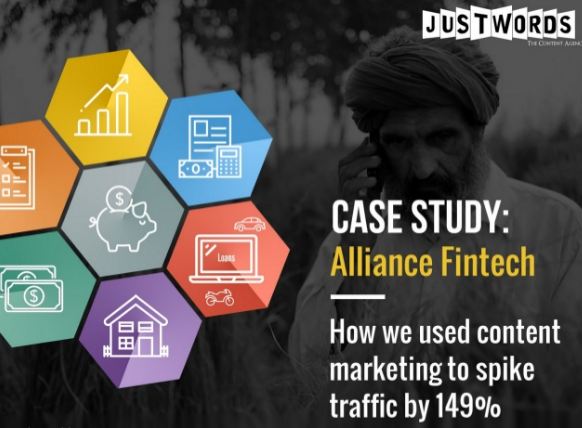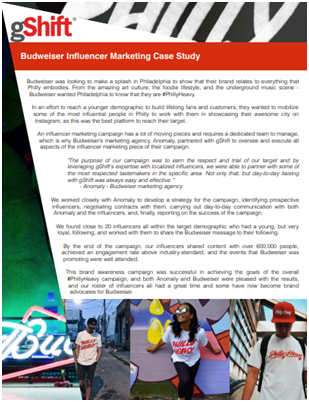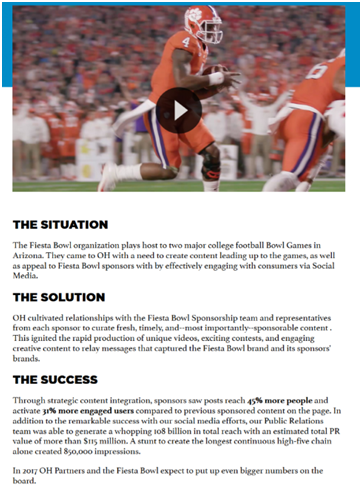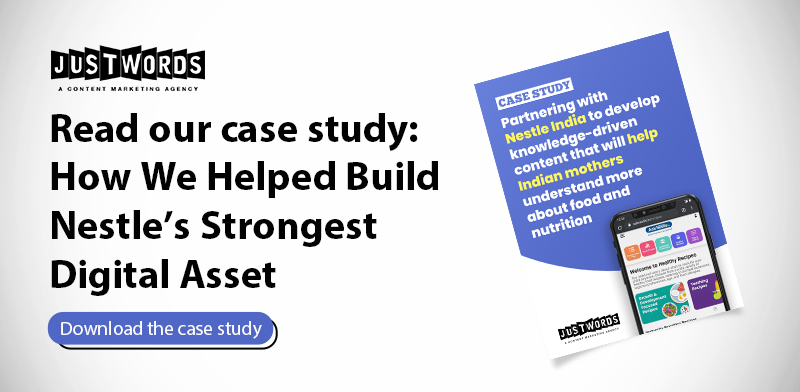As a content marketing agency, we often get these questions from our clients – “How do we actually get customers?”, “How do we convince customers that we are the best?” “How can we show clients that we are better than our competitors?” To be honest, no matter what your industry or business type is, you are sure to have these questions sometime or the other. And our answer to all these questions is writing a good case study,which showcases your past success in a detailed and data-driven manner to prove your mettle in your industry. If you want to convince and convert potential clients, this is your best bet.
Not sure what is a case study and how will it help?
Well, as a business, just saying you are awesome at something (like boosting organic traffic in our case) is not enough to convince customers that they should buy your services or products. You need to give them some hard data that proves your claim for real. And this is where a case study helps. Such a detailed, data-rich study can help you narrate a past customer’s success story and elaborate on how your product or service helped solve their business challenges. A case study will also include the metrics you used to measure the success – be it in terms of revenue gained or number of leads generated. Check out this case study example for a better idea, before you learn the steps of crafting one yourself.

Wondering how to create a case study?Here are the steps:
1. Determine the goal or objective of the case study
First, figure out what you wish to prove with your case study and which client objective do you want to focus on. While there might be several client objectives, pick the one which you want to show to your would-be customers. For example, your case study could cover any of the following client objectives like lead generation, lowering business costs, increasing profitability and revenue, converting more customers or establishing a foothold in a new market.
Read on to create a case study outline.
2. Establish the case study format
Now decide which format you wish to use to create your case study. Consider your target customers’ demographics and content consumption patterns to decide which case study format will work for them. Millennial customers might prefer video case studies while CXOs, CEOs, and COOs might prefer case studies in text format. While an infographic case study can be ideal for Pinterest, a textual one can appear on the website, and a video case study can be promoted on YouTube. Here is a bit more information on the popular case study formats:
• Infographic –Go for a vertical and longish infographic that charts your path of success from the top to the bottom. As the reader scans down the infographic, he should be able to spot the major metrics you used and the results you achieved easily. For this, use a simple case study format with neat, big font for text and charts or diagrams. Check out some cool infographic templates here.
• Textual –Your case study can also be in the form of an e-book and you can make it into a PDF (see the one by Budweiser) that can be downloaded after your site visitors fill up a short form. This will help you capture their basic details like name and email ID and generate potential leads too.

• Video –A good ideafor this kind of format is to meet the client and make a video of the interview. This way, your prospective customers can see how your client had actually benefitted from your services and be more convinced. You can also get more creative ideas for a video case study here.
• Podcast –This format is ideal if you wish to go the audio way. A real conversation between you and the client will convince listeners about your services or products and seem human as well. Podcast case studies are also easy to follow when you are on the go and has a direct, engaging touch.
3. Identify the right customer for writing a case study
Now find the right client to write a case study. Pick a client who has knowledge about your service/product offering and can speak well about the value that he received. Choose clients who have tasted success or achieved good ROI because of your product/service and will be happy to share their success story.Between small businesses and well-known brands (names that are easy to recognize), cover the latter first since it will give more credibility to your brand.
Also Read: [Free Case Study] Alliance Fintech – How we used content marketing to boost traffic by 149%
4. Request permission to write the case study
Inform your customer and ask for permission before showcasing them in your case study. Draft and email a case study release form. In it, mention why you are creating the case study, how it will be used, the type of client information you will include (like name, job title, picture etc.), what kind of help you expect from the customer and what kind of compensation you will provide. Here is how a release form might look like:
You can convince them for the case study by explaining:
• How they will get brand exposure and reach out to more people
• How employee exposure will shoot up if quotes are shared against top employee names
• How they can earn product (the ones you sell to them) discounts
• Mentioning that the case study will link back to the client’s website, thereby boosting its organic traffic
Remember that when the client reads your request, he will be more eager to know how he will benefit from the case study rather than you.
Once the customer signs, approves and returns the release form, you need to prepare a questionnaire to conduct a productive interview and get the material you need for creating a case study.
5. Ask your customer the right questions
While preparing the questionnaire, make sure you include the following questions:
• What were the customer’s goals before he decided to buy your product? (You can ask about his industry experience and different departments too)
• What were the challenges or pain points he was facing before buying your product? (Also ask about the consequences if the client had not found a solution)
• How did they hear about your product and why did they choose it over those offered by your competitors?
• How did the customer arrive at his purchase decision?
• How has the customer benefited from using your product or how was the solution implemented? (request data wherever possible to support this)
6. Plan the basic case study layout
Give your case study a short and interesting title, and in the subtitle, briefly explain what you accomplished with the particular client. Include a 2-4 lines executive summary of the study and use bullet points if possible. Include key points on the customer’s background, business challenges, how you helped solve their challenges, data-driven results, and the customer’s key takeaways after using your product or service. Add quotes, data, and other visual materials that are relevant. Also add a specific call to action at the end.
Also Read: Types of content that will attract paying customers
Also, if you want, you can always create a short but impactful version of a long case study story, like OH Partners did. This is especially useful if you want a case study on the website’s landing page.

7. Publish your case study
Choose between publishing a case study as a gated content with a landing page or in a dedicated section as “Case Studies” or “Testimonials” on your business website. Each method has its own pros and cons, depending on your business goal or objective. If you need to collect contact details from potential customers or leads, opt for gated content.Or else, you can make your case study easily accessible for all on the website.
8. Promote your case study
Post the link to your case study across social media channels to promote your business. Drive a huge amount of traffic to your website or video channel depending on the format and publishing platform of your case study. For example, lifestyle brands prefer video case studies while most SaaS brands choose both text and video case studies that are promoted across professional networks, social media, and video channels.
Finally
Now, it’s time to get started with your own case study, by keeping the above pointers in mind. Here are some helpful templates offered by Hubspot that can help you to create your brand’s case study and impress your potential customers.






